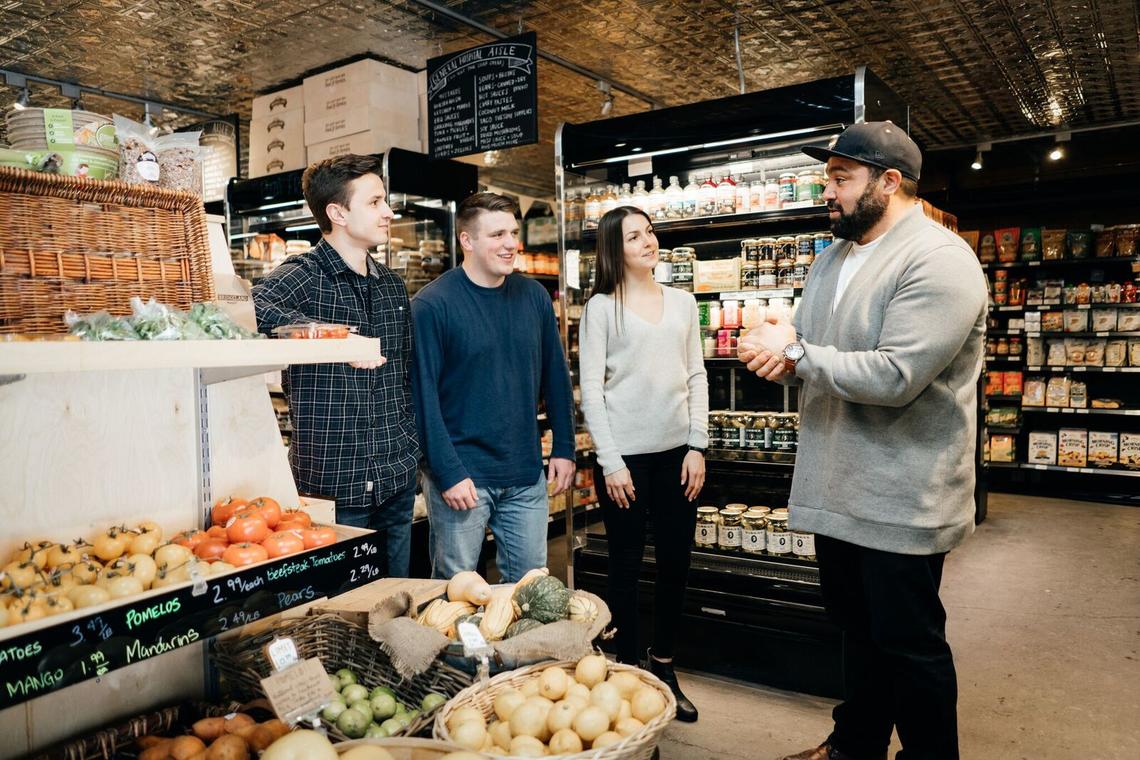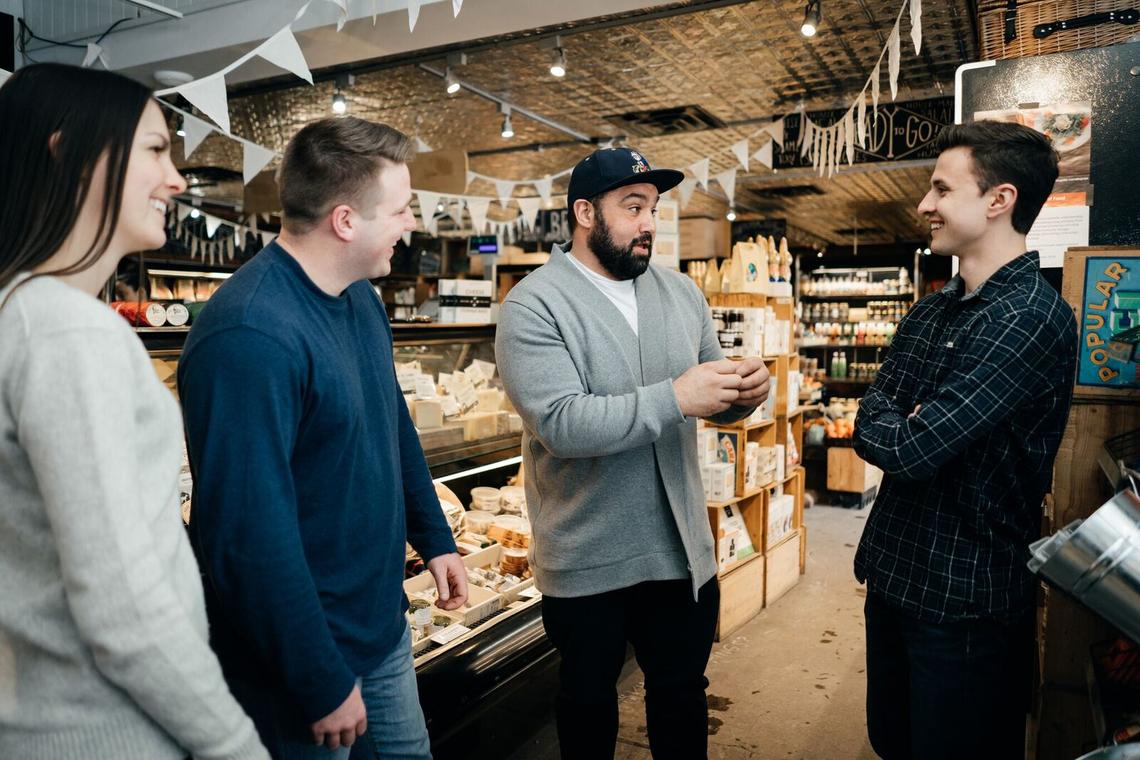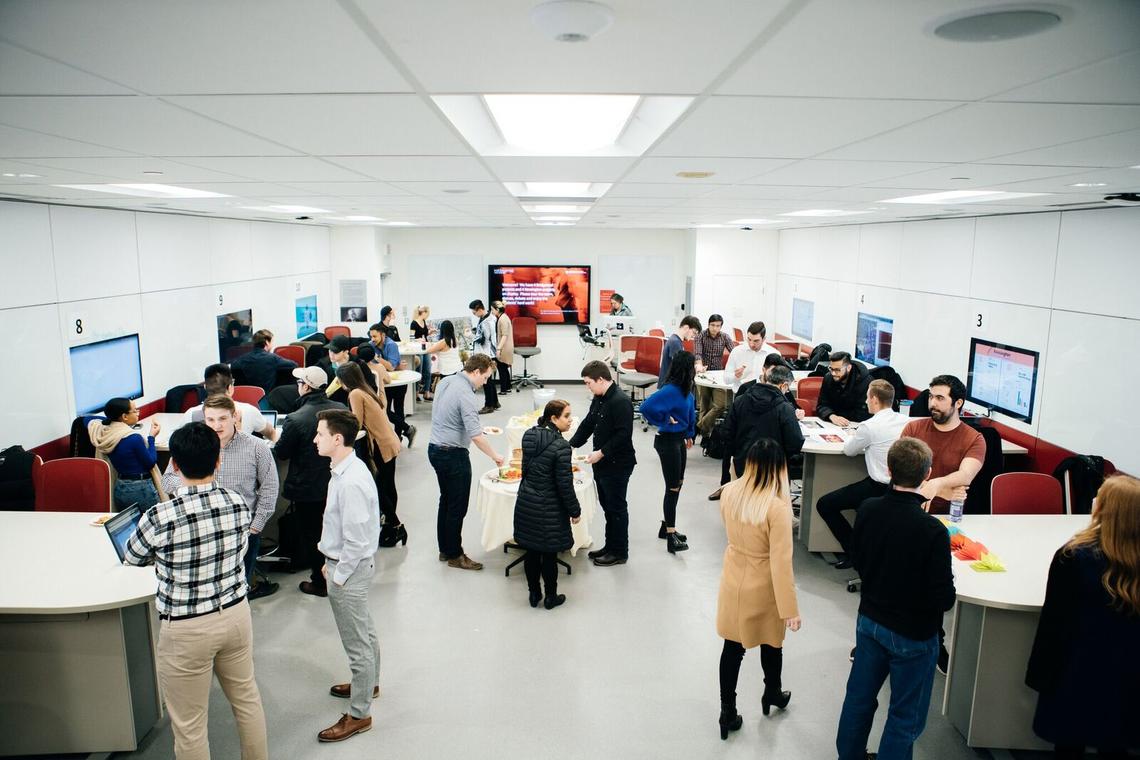April 23, 2018
Haskayne students explore concept of 'co-opetition' in Kensington and Bridgeland

Students from ENTI 405 learn first-hand about the entrepreneurial ecosystem in Bridgeland.
Kelly Hofer
Traditionally, university students learning how to start a new business would put together a business plan for a fledgling enterprise.
But Alice de Koning, instructor of the New Venture Startup course at the Haskayne School of Business, takes a broader approach.
“No business is an island unto itself,” says Koning, senior instructor and area chair, business, environment, entrepreneurship and innovation. “The business plan does not get at what an entrepreneur truly needs — resources and a network.”
Instead, her students examine the entrepreneurship ecosystem. “Competitive advantages for a business are not enough to thrive,” emphasizes de Koning. “You need to think about your co-operative advantage. How your business fits into the overall ecosystem.”
Bridgeland and Kensington were selected as two retail zones for her students to explore, compare and contrast. They connected with small businesses like Blue Star Diner, The Main Dish, La Brezza Ristorante, Bike and Brew, Bridgeland Market/Tazza, Atticus Tattoo, Leela Eco Spa, Sunnyside Art Supplies, a Second Cup Franchise, Trapped Escape Room Calgary, The Roasterie, Reiuve Health and Wellness, Kensington Konsignment, Evolved Health, SwizzleSticks Salon and Spa, The Naked Leaf, and Kensington Wine Market.
"Co-opetition" is the concept of businesses in an area or even a sector coming together to co-operate at the same time as they compete. In a retail main street you may find restaurants that work together to create a food district. As a cluster, these businesses are more attractive — and can create a locale where each business can flourish.
The concept of co-opetition applies elsewhere. Think of the tech sector in Silicon Valley — venture capital, employees and innovators are all drawn there because an ecosystem has been created. Ecosystems are very elastic and will welcome new players if they fulfil a niche or a need that the group requires.

From left: Students Alyssa Froese and Brodie Pierson meet with Yousef Traya and Tanner Shapka.
Kelly Hofer
Co-operating to meet common challenges
Students put their out-of-the-box thinking to the challenges and opportunities these two ecosystems face.
“We got to see how businesses work together to make a success,” says Rupali Yeast, a student majoring in communications and media studies with a minor in management and society. “Your location and resources — like a BRZ (business revitalization zone) — make a difference. We saw that Kensington is a close-knit community welcoming to new and smaller businesses.”
“Rents in Kensington are high — averaging $45 to $65 a square foot,” said Annie MacInnis, executive director, Kensington Business Revitalization Zone, during a lively discussion with students over their final projects for Entrepreneurship and Innovation 405. Kensington is constrained for growth, the group observed, with hard borders at the river and many historical buildings constraining upward growth.
“We need to think creatively about using the spaces we do have and perhaps find room for smaller retail.” MacInnis spoke about Victoria’s Fan Tan Alley as an example of a showcase for micro-businesses that might also work in Kensington.
Parking was a common challenge that students saw in both ecosystems, and solutions ranged from new parkades to a valet parking app. “There needs to be better communications between businesspeople and planning,” says Brodie Pierson. His group interviewed Yousef Traya of Bridgeland Market.
In a winter city like Calgary, weather is also a challenge for retail districts. “We saw a distinct slump in sales in January to March for Kensington vendors,” says Bachelor of Commerce student Michael Gibbons. His group looked to another winter city, Winnipeg, for solutions. “We proposed that the Kensington BRZ look to implement heating in certain areas like they do in The Forks.” Their plan came complete with researched budget requirements.

From left: Kevin Fallwell, Aaron Li, Alice de Koning (senior instructor) and Komil Rehill.
Kelly Hofer
Invaluable insights from real entrepreneurs
The tremendous openness from the business owners in Kensington and Bridgeland helped to create this unparalleled learning experience for the students. “Interacting with entrepreneurs has been the most valuable part of this course — learning about the entrepreneurial mindset and hearing about the experience and insights from real entrepreneurs,” says Anubhav Gupta, chemical engineering student with a minor in entrepreneurship and enterprise development.
“The interview process with the students made me realize my journey,” says Gaurav Gupta, owner, Leela Eco Spa. “I have more perspective on myself from 10 years ago when I started my entrepreneurial journey to today.”
“I am consistently awed by the support we have, from guest speakers and local businesses to businesses willing to be featured for case studies,” says Sylvia Trosch, community based learning adviser at the Haskayne School of Business. It is an example of another kind of ecosystem: current businesses supporting the business leaders of tomorrow.

Students explore, compare and contrast entrepreneurial ecosystems in Bridgeland and Kensington.
Kelly Hofer
